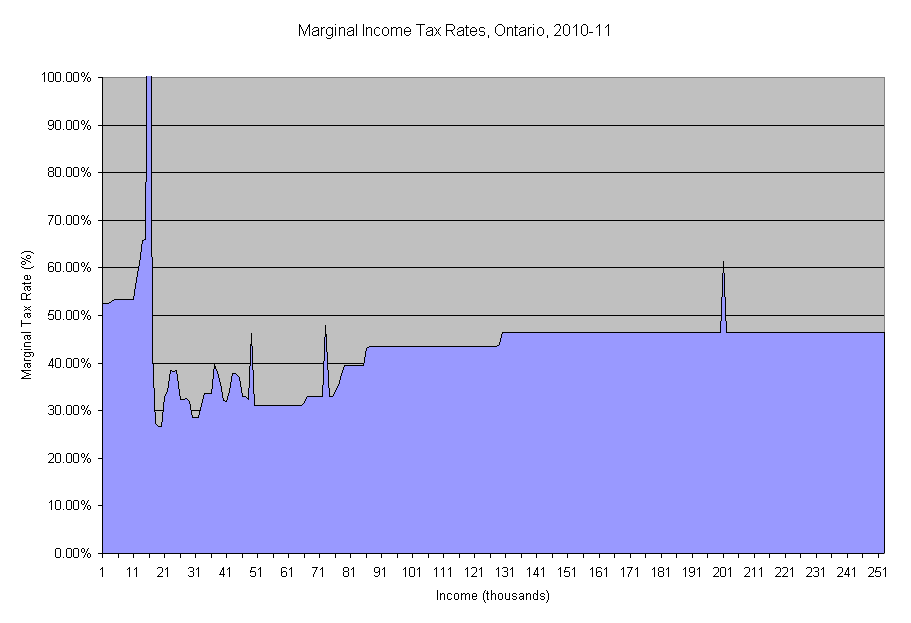So, after my last post on marginal tax rates, there were a few questions about what it was/why it was important/etc…
So, we can start with Wikipedia, but basically, the marginal tax rate is how much tax you pay on your last dollar of income. Or conversely, how much of your last dollar of income you keep. It is a measure of how incentivized the population is to do ‘just a little’ more work. In most modern societies, the tax structure is set up (at least in theory*) such that the more money you make, the higher the marginal tax rate, to try to even out the wealth distribution a little.
The previous post showed the following graph:

Which shows some of my inability to make a pretty graph with Excel, but more importantly shows that the marginal tax rate is highest for those making the least amount of money. This disincentivizes work (at least, not under-the-table work) among those on welfare. Most people who are interested in a rational economic and social policy think that this is insane. Not only are you discouraging those most desperate from working for a living, you’re also reducing the tax base at the same time.
Basically, if you’re on welfare, and get a part time job, you will lose more than half of your income to clawback and taxes.
You also create a large barrier to workforce entry, and encourage people to stay on welfare, rather than gradually bringing themselves out (this is also hard on those who can only work part time for family or other reasons).
There are a number of reasons why this might have been implemented like this, inertia combined with evolution, for one, but probably including a healthy dollop of Puritan “if you don’t succeed, you’re not trying hard enough”.
So, what should we do about this? I will leave most of that to the comments, but my assumption is that the goal is to have as large a portion of the population as possible productively employed (you can define this however you want), to the best of their abilities. There are a lot of things you can do with tax structure to accomplish this, but let’s start with the marginal tax rate.
*Capital gains taxes will likely be a later blog post here